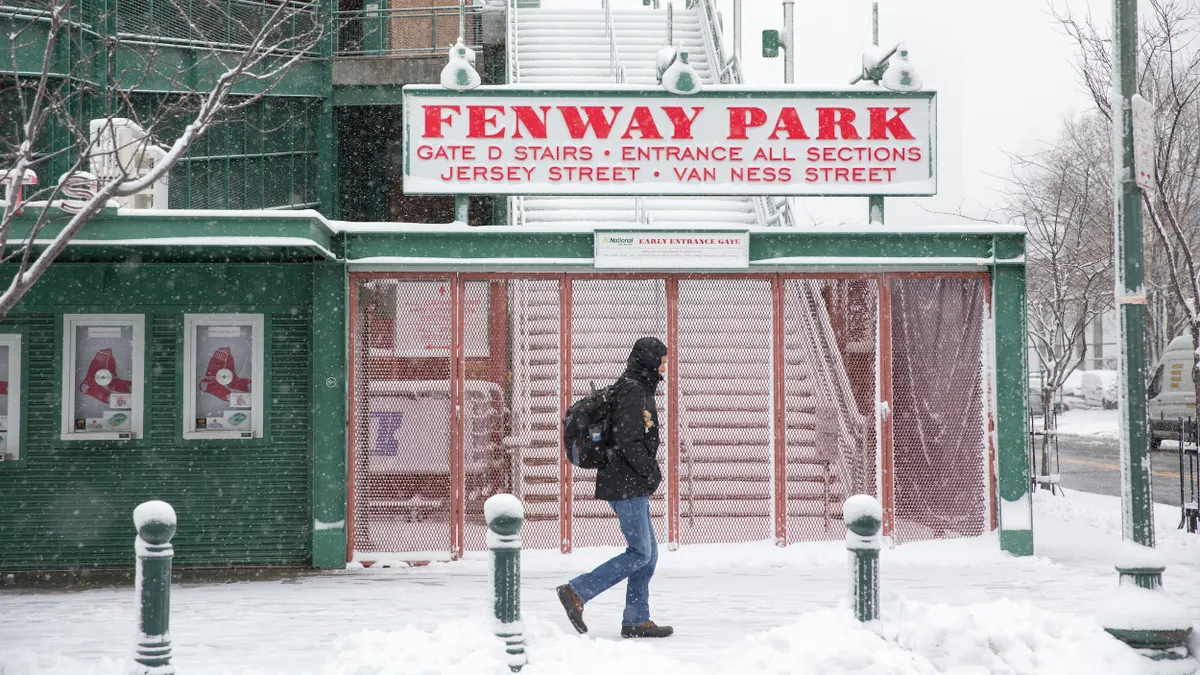Shortly after making its shared e-scooter program permanent in 2022, Pensacola, Florida, began requiring riders to park the dockless vehicles in designated "corrals" to reduce the number of improperly parked scooters blocking sidewalks, storefronts and pedestrian ramps in the city's downtown.
It’s working, city officials say. Before the city implemented the requirements, improperly parked e-scooters were the most common problem reported to Pensacola's 311 system, but complaints have since dropped significantly, said Caitlin Cerame, the city’s transportation planner.
Other cities across the U.S. are dealing with similar challenges as shared, dockless e-scooters and bikes become more popular, often making it more difficult and dangerous for pedestrians, especially those living with disabilities, to navigate public sidewalks.
Many cities, including Atlanta and Washington, D.C., limit where and when people can park micromobility vehicles. Other local governments — including Chicago; Portland, Oregon; and Washington, D.C. — have implemented "lock-to" requirements, which mandate that riders lock a dockless micromobility vehicle to a fixture such as a bike rack, parking meter or signpost when they end a ride.
Some local governments, including Long Beach, California, have attempted to rein in micromobility clutter by only allowing micromobility operators to deploy their dockless vehicles in designated locations. Cities like Santa Monica, California, meanwhile, have banned operators from deploying micromobility vehicles in specific areas while still allowing users to end trips there.
Local governments may also create hub zones, which mandate that riders end their trips in specific locations, or fully ban people from riding or parking dockless e-scooters and e-bikes in certain areas.
Success factors for micromobility-clutter prevention
Riders are far more likely to park micromobility vehicles properly when they can do so within a one-minute walk to their destination, according to an April 2024 report published by the Urbanism Next Center at the University of Oregon.
But more parking isn’t always better. Parking compliance rates improve dramatically as parking corral density rises — until about 50 to 80 corrals per square mile, the report says. At that point, more parking corrals provide diminishing returns.
However, city planners should ensure that parking corrals are distributed evenly across a service area to avoid creating parking "deserts" that can lead to higher noncompliance rates, the report says. Parking corrals must also have enough capacity to meet parking demand during peak traffic to ensure that riders can park when and where they need to. "Mixed-use, leisure, and tourism areas should have higher-capacity corrals that can accommodate more parked scooters," the report says.
When Washington, D.C., added more parking corrals, it saw an increase in the proportion of Lime bike and scooter trips ending at corrals, rather than elsewhere on the street, according to a September report published by Lime and the League of American Bicyclists. D.C. also has a lock-to requirement.
"Success factors [for the corrals] include being well marked, placing parking corrals on-street, and locating corrals at pedestrian crossings to improve visibility at intersections," the report says.
There isn't much research on the effectiveness of other approaches to reducing improper micromobility parking, such as lock-to requirements, but they appear complementary, said John MacArthur, sustainable transportation program manager at Portland State University's Transportation Research and Education Center.
When Chicago tested a lock-to requirement in 2020, the rate of scooter -related 311 complaints fell 60% within the first month compared with the city’s 2019 micromobility pilot, which did not require riders to lock shared e-scooters to a fixed object when parking.
Local governments focused on developing strong multi-modal transportation networks will likely devote more resources to integrating shared, dockless micromobility vehicles into their transportation planning and operations than other cities, MacArthur said. However, that could prove challenging, given that almost all shared micromobility services are privately owned and operated.
Mobility hubs, which offer convenient access to multiple transportation modes and related amenities, and multi-purpose parking corrals could also help cities better integrate micromobility services into their transportation networks and curb micromobility clutter simultaneously, said Doogie Roux, a micromobility consultant and former director of operations at Houston Bike Share, the nonprofit that operated the city’s now-defunct bike-share network.
Some communities, for instance, don't allow riders to lock dockless e-scooters to bike racks, which can make it difficult for micromobility users to park their vehicles properly. Providing ample parking for bicycles, scooters and other small vehicles in one place could be "ideal for everyone,” Roux said.
Pensacola’s comprehensive approach
Part of what made Pensacola’s parking corral program so successful is that the city combined it with other measures to ensure proper parking, Cerame said.
Pensacola banned parking on sidewalks along corridors with lots of pedestrians and built parking corrals in busy areas to make it easier for riders to park downtown, Cerame said. Dockless parking is allowed outside corrals in areas where micromobility clutter hasn't been a major issue, including areas with limited pedestrian traffic.
The city also requires users to take a photo of the parked vehicle and share it with Veo Microbility, which owns and operates Pensacola's dockless scooters, through the company's mobile app. Pensacola fines riders up to $150 for improper parking.
Veo also agreed to respond to parking complaints from the city within one hour and to pay a penalty if it doesn't, incentivizing the company to police its users rather than relying solely on the city to ensure compliance.
This combination of infrastructure, technology, policy and enforcement has made dockless e-scooter parking much less chaotic than before the requirements took effect, Cerame said.
"It's gotten to the point where we get a complaint once every four months or so," Cerame said. "It has really adjusted and righted itself.”


















